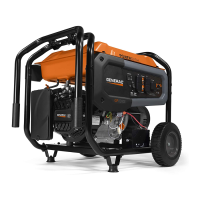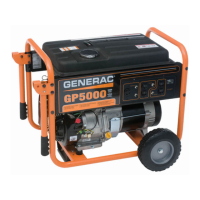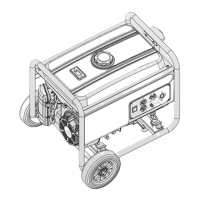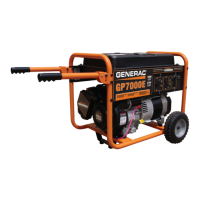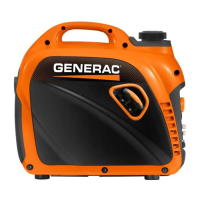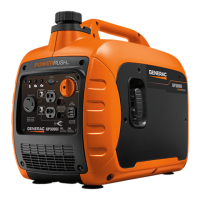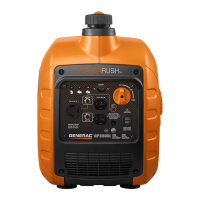Section 4 AC Diagnostic Tests
Diagnostic Repair Manual 51
Figure 4-36. Testing Ignition System
4. Crank the engine rapidly. Engine must be cranking
at 350 rpm or more.
a. If spark jumps the tester gap, the ignition
system is working properly.
b. Repeat on remaining cylinder spark plug.
5. If spark jumps the tester gap intermittently, the
problem may be in the ignition magneto.
Figure 4-37. Checking Engine Miss
Results
Refer back to the flow chart.
Test 30 – Check Spark Plugs
Procedure
1. Remove spark plugs.
2. Clean with a commercial solvent. DO NOT BLAST
CLEAN SPARK PLUGS.
3. Replace spark plugs if badly fouled, if ceramic is
cracked, or if badly worn or damaged.
4. Set gap to 0.040 inch (1.016 mm).
5. Use a Champion RC14YC (or equivalent)
replacement spark plug.
Figure 4-38. Setting Spark Plug Gap
Results
1. Clean and re-gap or replace sparks plug as
necessary.
2. Refer back to the flow chart.
Test 31 – Remove Wire 18 / Shutdown
Lead
Procedure
1. See Figure 4-39. Disconnect wire 18 from the stud
located above the oil cooler.
2. Perform Test 29 again checking for spark.
Results
Refer back to flow chart.
Figure 4-39. Wire 18
Test 32 – Test Start Stop Relay (SSR)
Procedure
1. Set DMM to measure DC voltage.
2. See Figure 4-40. Remove wire 15 from Terminal
13 on the start stop relay (SSR).
3. Connect the positive meter test lead to wire 15
removed in step 2.
4. Connect the negative meter test lead to frame
ground.
a. If 12 VDC is measured proceed to step 5.
b. If 12 VDC is not measured repair or replace
wire 15 between the SSR and battery charge
rectifier 2 (BCR2).
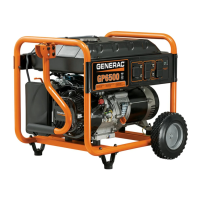
